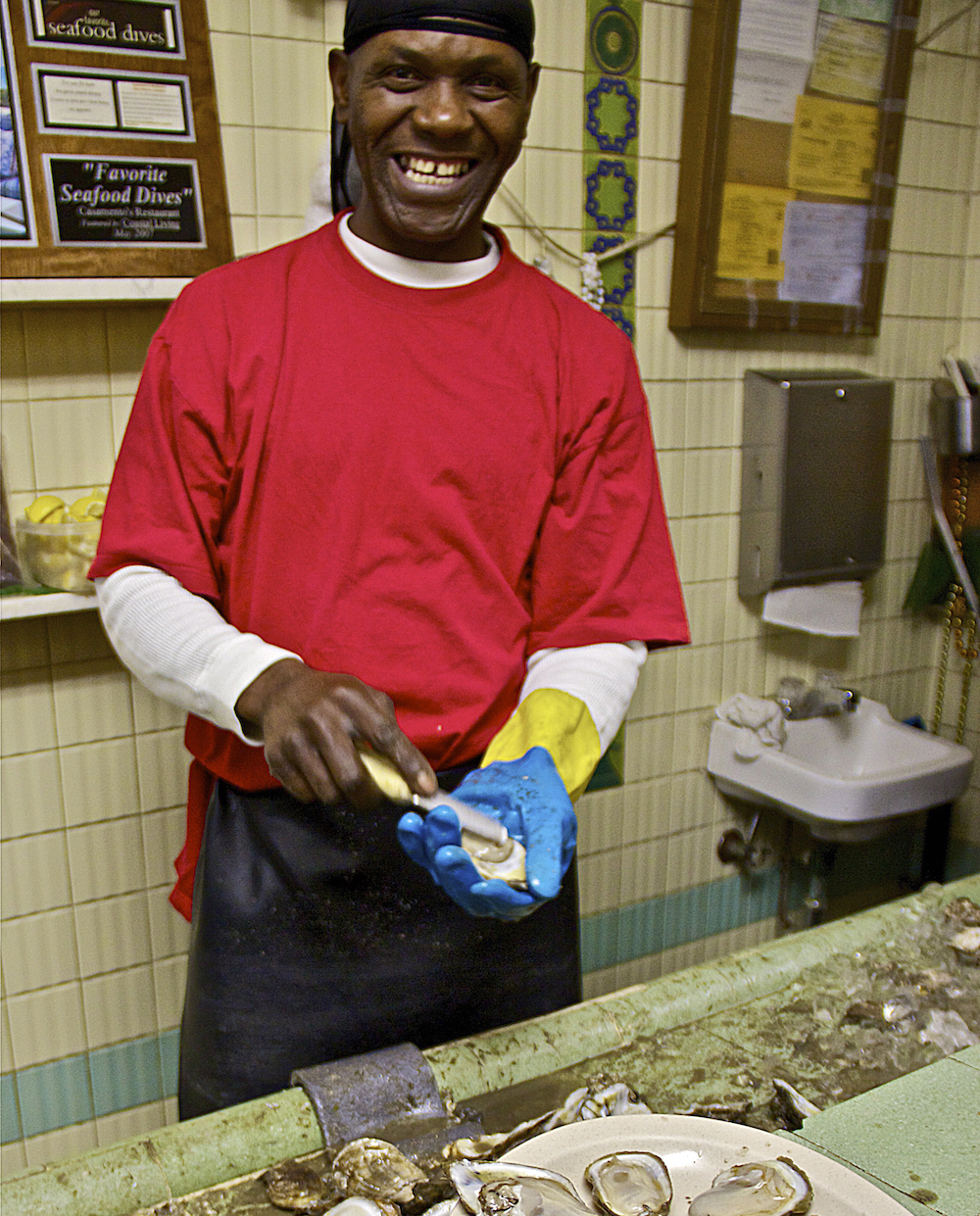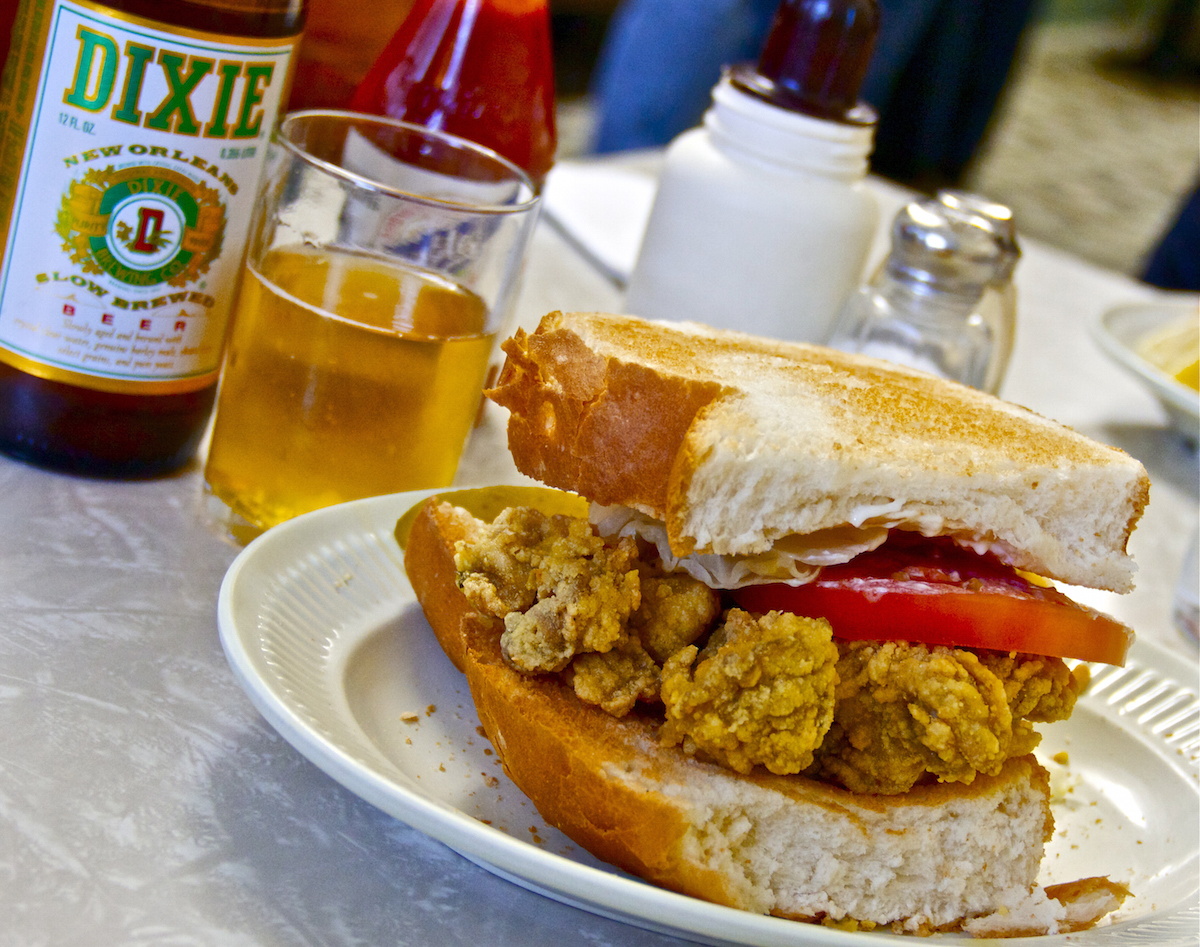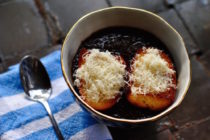Editor’s note: This article and recipe are from the December 2016-January 2017 issue of My Table magazine.
As a born and bred Louisiana boy, I was raised that eating oysters in the fall and winter months is the natural order of things. Conventional wisdom holds that oysters are only to be consumed in months that contain the letter “R” – i.e. September through April. And although that age-old adage still prevails, you’d be hard-pressed to find any month of the year along the Gulf Coast that the tasty bivalves aren’t available.
On a memorable trip to New Orleans with my wife Roxanne and daughter Lauren, we stayed overnight in a gracious old shotgun house in the Uptown section, just off Magazine Street. Most visitors to the city never make it past the French Quarter, but New Orleans’ most interesting areas are just minutes away from the touristy trap that the Quarter has become. All along the Warehouse District, Mid City, the Marigny, the Garden District and Magazine Street are some of the local haunts that make the city so unique.
On the upper stretch of Magazine resides one of my favorite old-time restaurants, Casamento’s. Situated in tight quarters with a timeworn storefront, this legendary eatery is passed by many without the slightest glance, but inside is one of the perennial favorites of generations of Uptown residents who swear by its raw oysters and sandwiches, including my favorite, the oyster loaf.

A smile of pride from a third-generation oyster shucker at Casamento’s
Walking into this historical establishment is to step back in time. Casamento’s has preserved the look and feel of the genteel era of New Orleans’ finest restaurants complete with inlaid black and white subway tiled flooring and the single row of tables opposite the long shucking station. Walking the length of the room, you can smell the fresh brine in the air and hear the non-stop chatter of the close-knit oystermen.
An oyster loaf in many establishments around Louisiana is simply fried oysters on po’boy bread, but Casamento’s takes it to new heights. Oyster shuckers lining the long counter are busy shucking sacks of fresh Barataria Bay oysters from the Gulf coastal waters of Plaquemines Parish. Watching them closely and listening to their stories, you understand that oysters should be treated delicately and with the utmost simplicity. Casamento’s oysters are larger and saltier than most I run across, which ensures the flavor is preserved during the fry.
Lightly breaded and flash-fried, these oysters reach that perfect level of crispy golden brown, but are never overcooked. Then they are sandwiched between two buttered, toasted slices of thick pullman loaf sandwich bread slathered with a generous amount of Blue Plate mayonnaise and topped with a slice of ripe tomato. With a few shakes of hot sauce and an ice-cold glass of Dixie beer, the Casamento’s oyster loaf is perfection for a South Louisiana boy taking a bite out of his childhood.
GULF COAST OYSTER LOAF
Recipe by George Graham, AcadianaTable.com
Remember, the key to this dish is to find fresh, plump Gulf oysters and flash fry in very hot oil to crisp the outside and leave the inside moist.
½ gallon peanut oil
3 large eggs
1 Tbsp. salt
1 Tbsp. pepper
2 dozen raw Gulf oysters
2 cups yellow cornmeal
½ cup all-purpose flour
2 Tbsp. Cajun seasoning
1 stick butter, softened
4 slices thick-cut white pullman loaf sandwich bread
1 cup mayonnaise
4 slices ripe tomato
4 slices dill pickle
kosher salt and freshly ground black pepper
METHOD: In a large pot over medium heat, add the oil and heat until it reaches 375ºF.
In a mixing bowl, beat the eggs and season with salt and pepper. Add the oysters.
In another mixing bowl, combine the cornmeal, flour and Cajun seasoning.
Add half the oysters to the cornmeal mixture and roll around until coated. Shake off the excess and drop the oysters into the hot oil. Fry the oysters in batches until golden brown, about 3 to 5 minutes. Remove to a paper towel-lined plate and keep warm.
Butter the top and bottom of the sandwich bread. Place on a griddle or pan on medium-high heat. Toast the bread until golden brown and remove. Spread the inside of the top slice of bread generously with mayonnaise. On the bottom slice of bread, place the oysters, and on top of the oysters, stack two tomato slices and sliced pickles. Sprinkle liberally with salt and pepper. Repeat with the second sandwich.
Be sure to have everything ready to go and serve these sandwiches as soon as the oysters come out of the fryer. Serve with hot sauce on the side and an ice-cold beer. Serves 2.
Notes: Find a local bakery that will slice freshly baked white loaf bread to your desired thickness. The effort is worth it. Be sure to use fresh oil for frying as oysters are delicate and easily pick up other flavors. Depending on the size of your oysters and the size of your bread, the number of oysters that will fit on your sandwich will vary.
About the author: George Graham is an award-winning cook, photographer and author. His 320-page cookbook collection of stories and recipes Acadiana Table: Cajun and Creole Home Cooking from the Heart of Louisiana published by Harvard Common Press is now at booksellers everywhere.









Follow Us